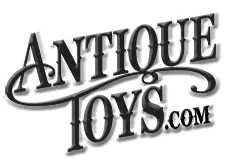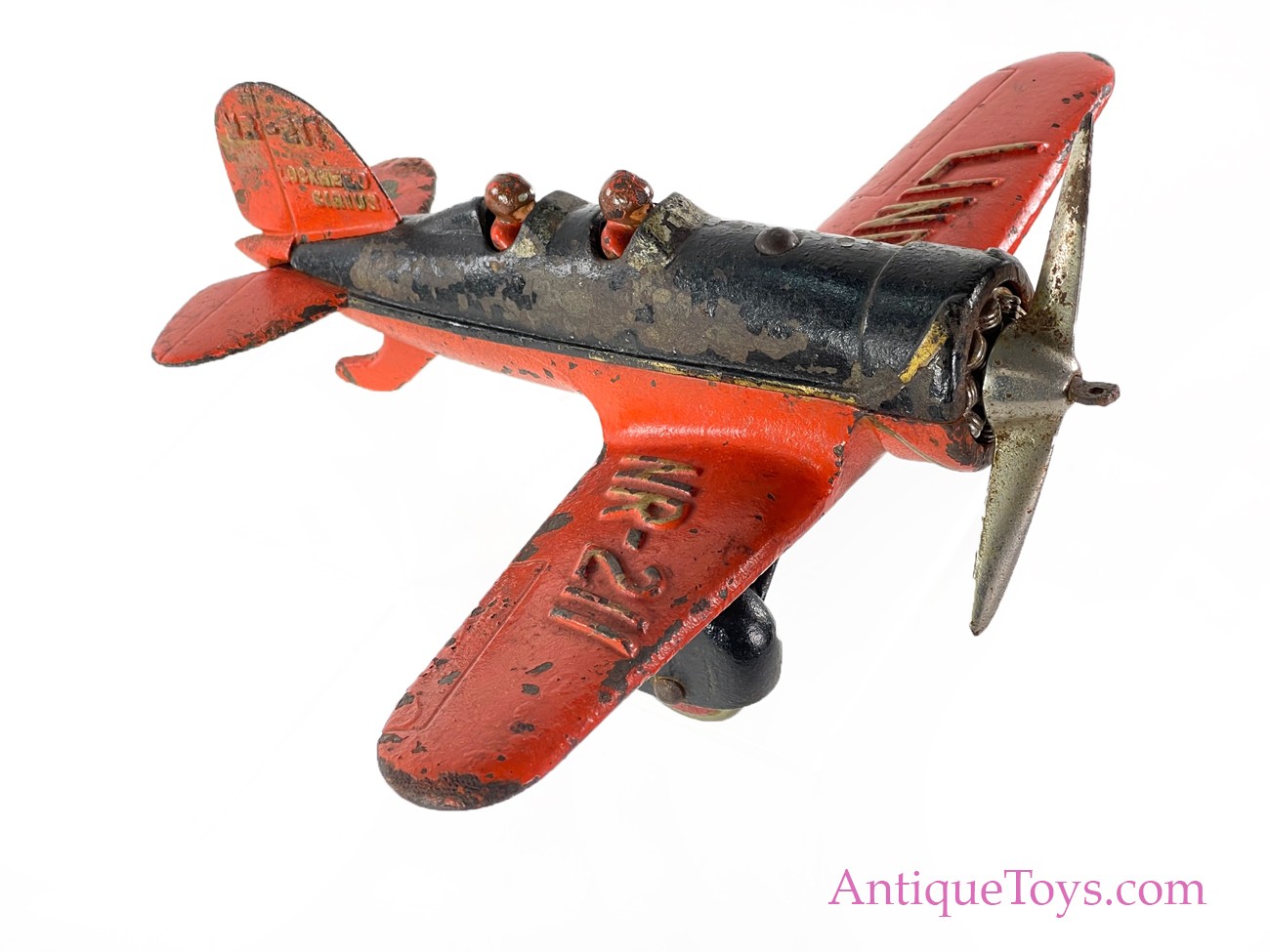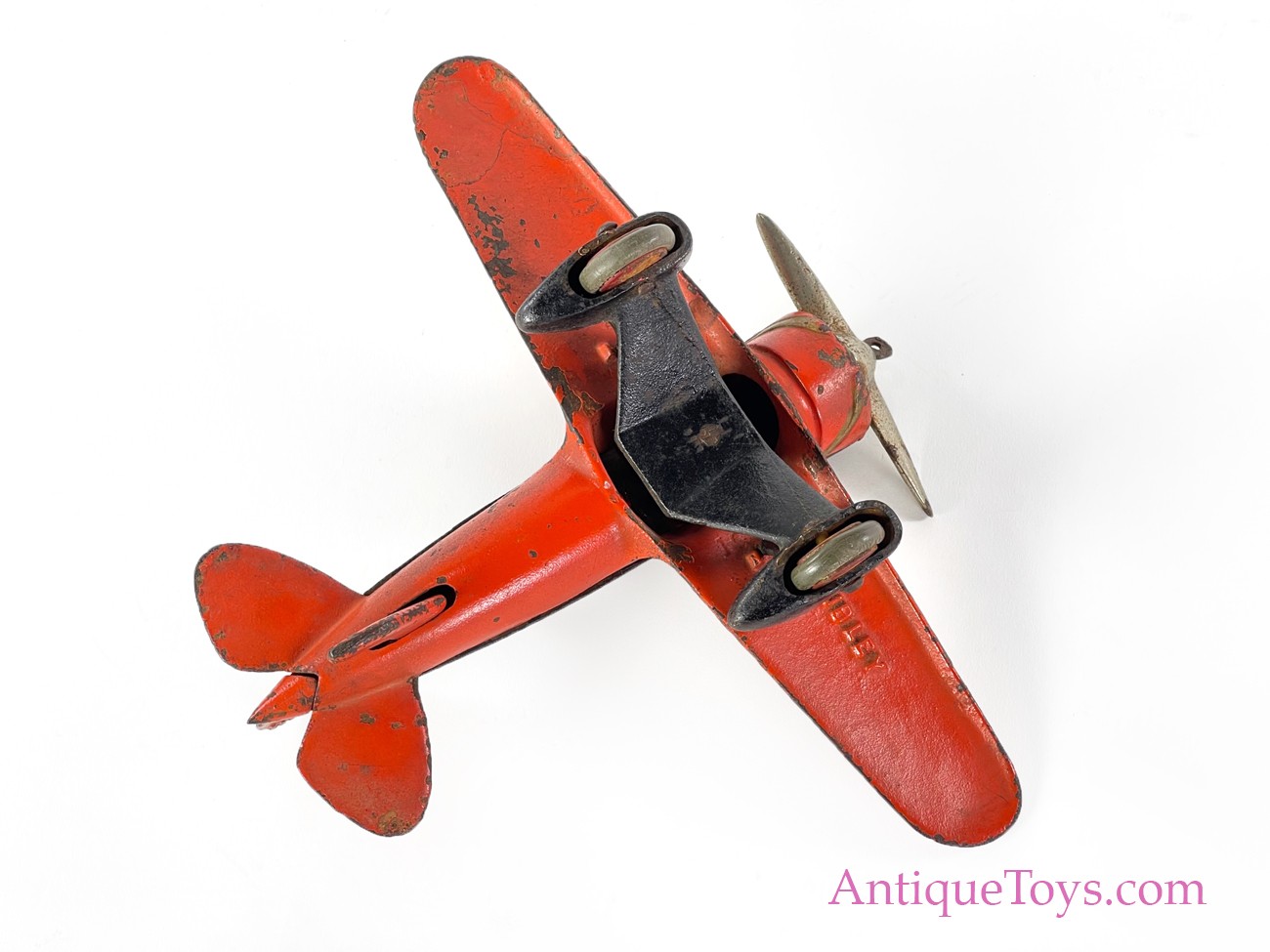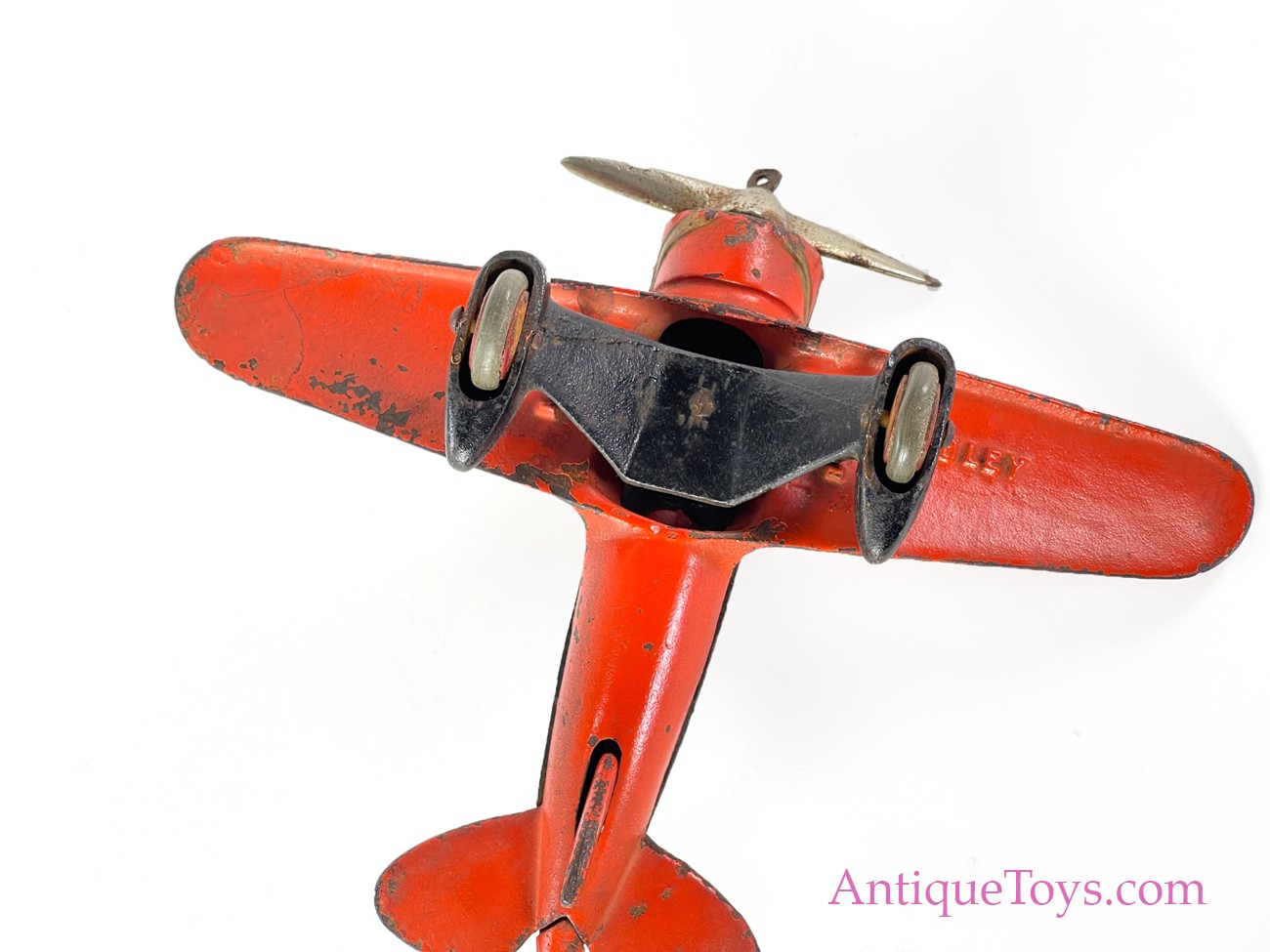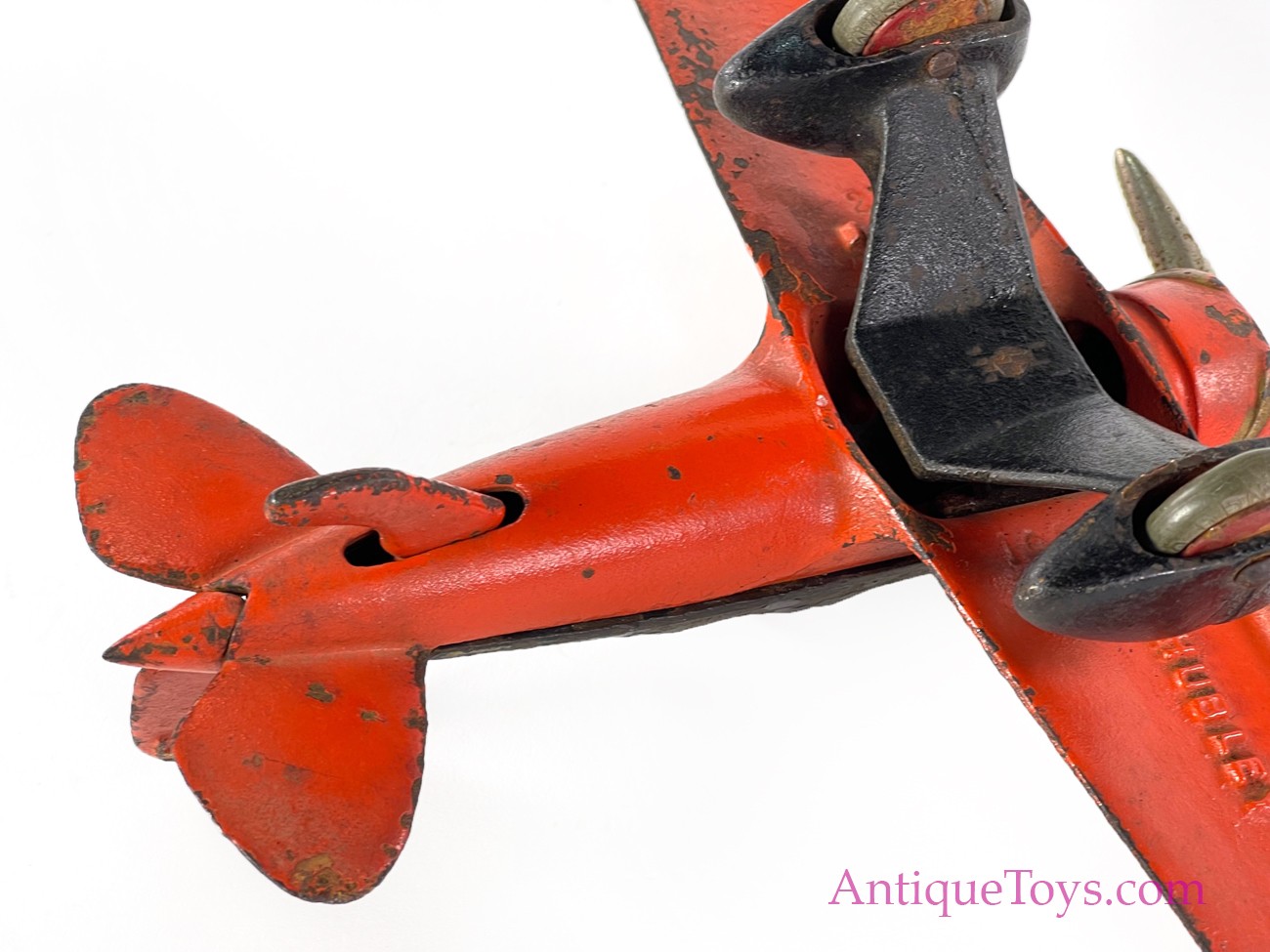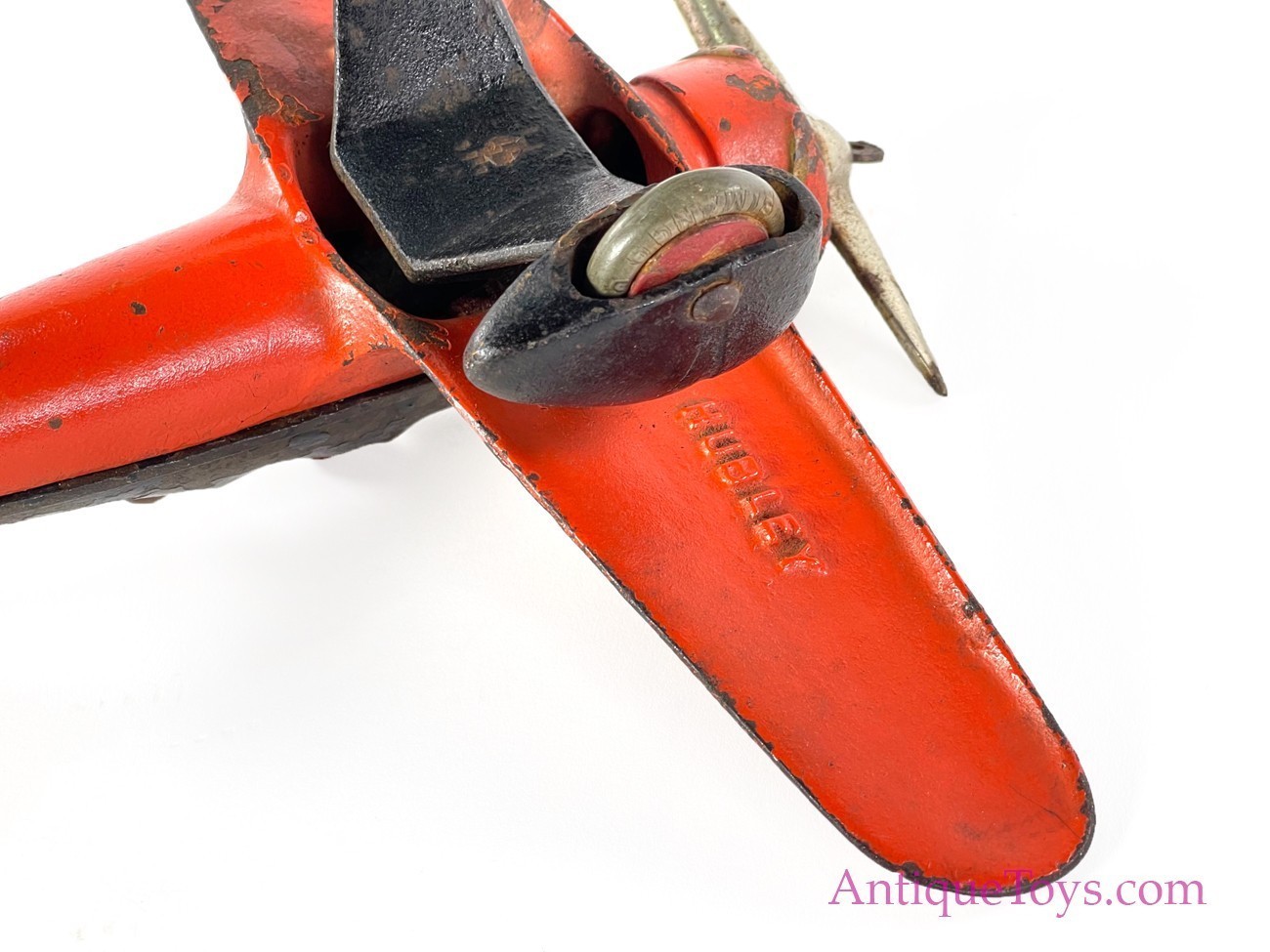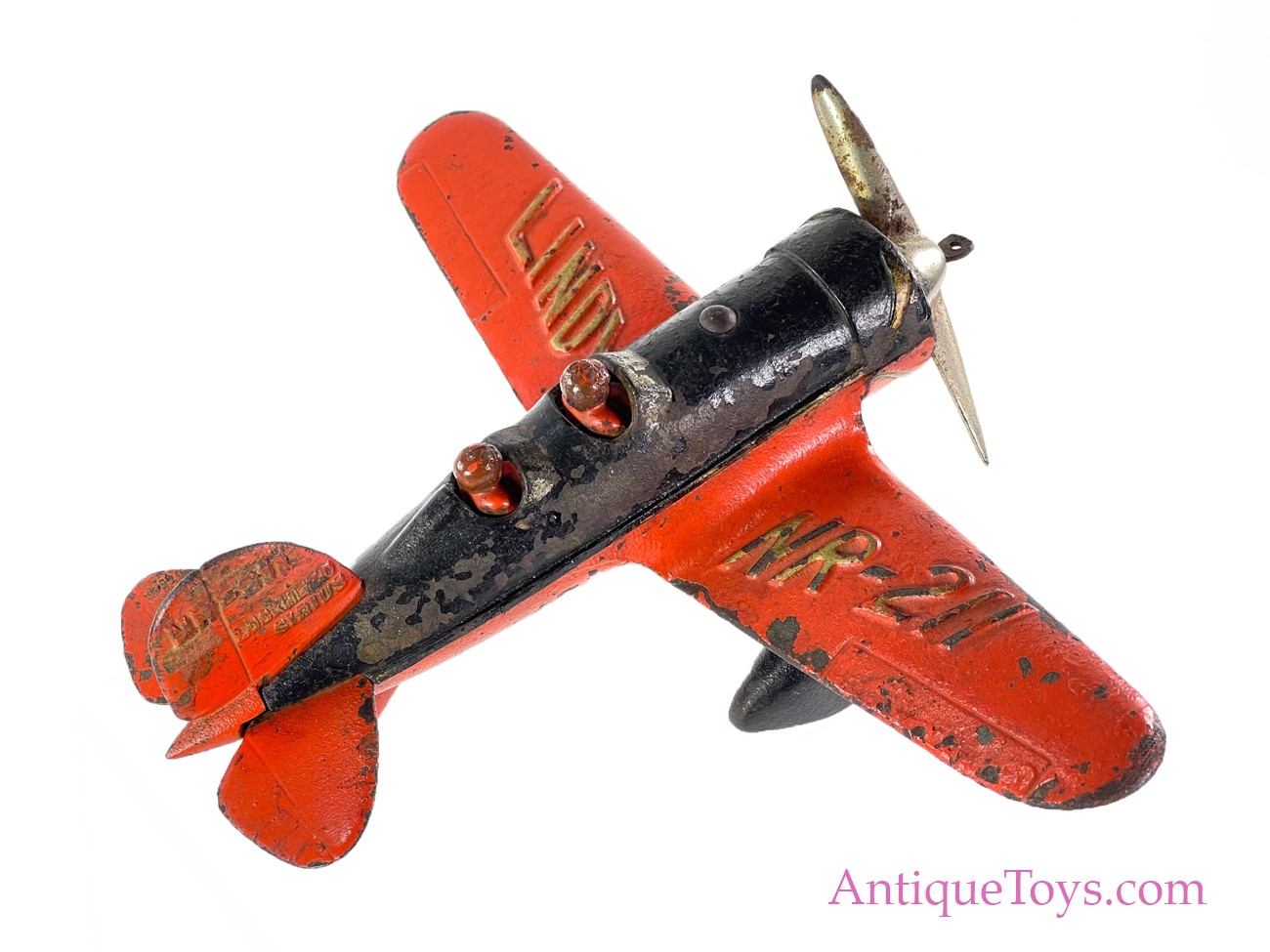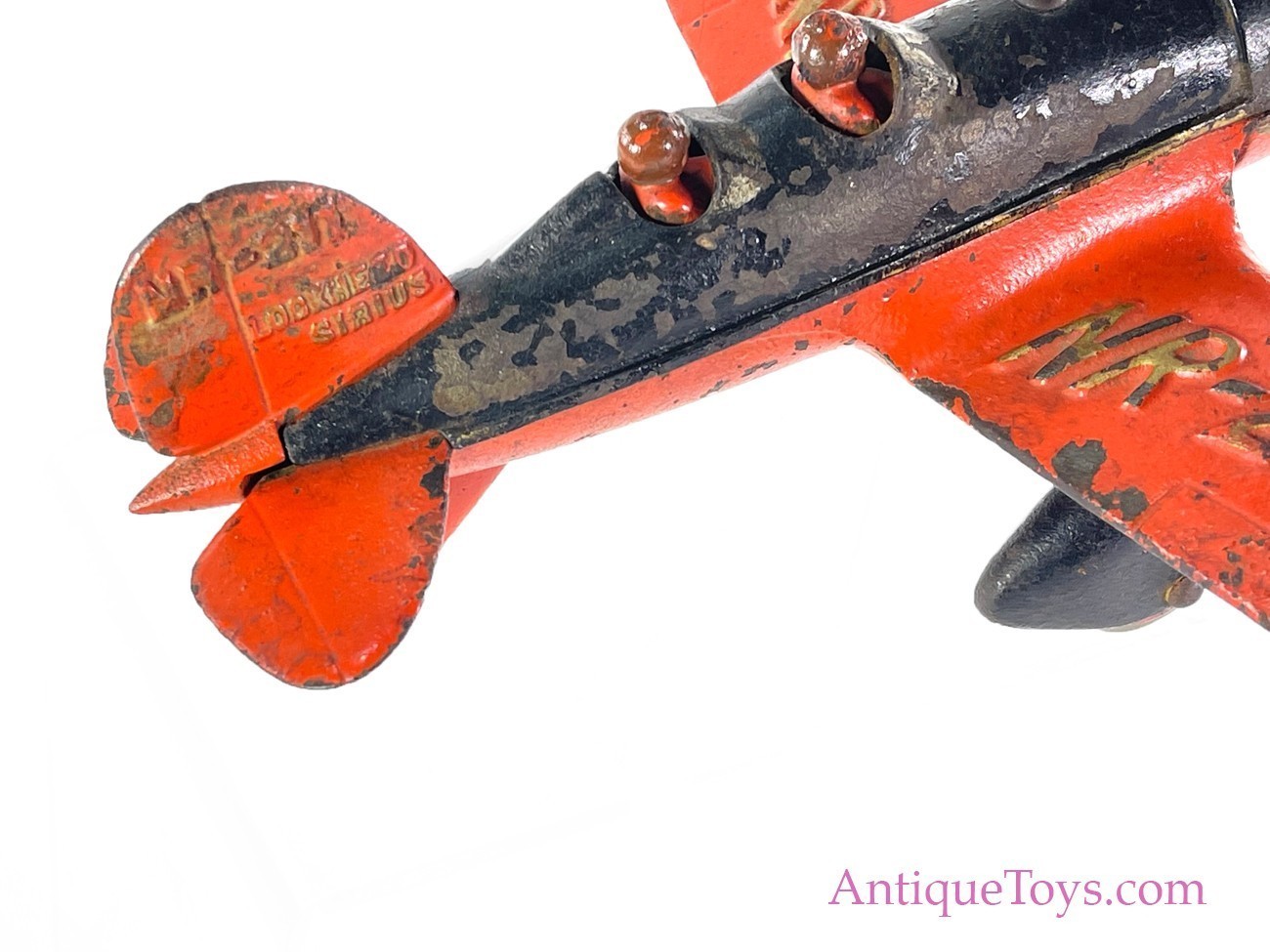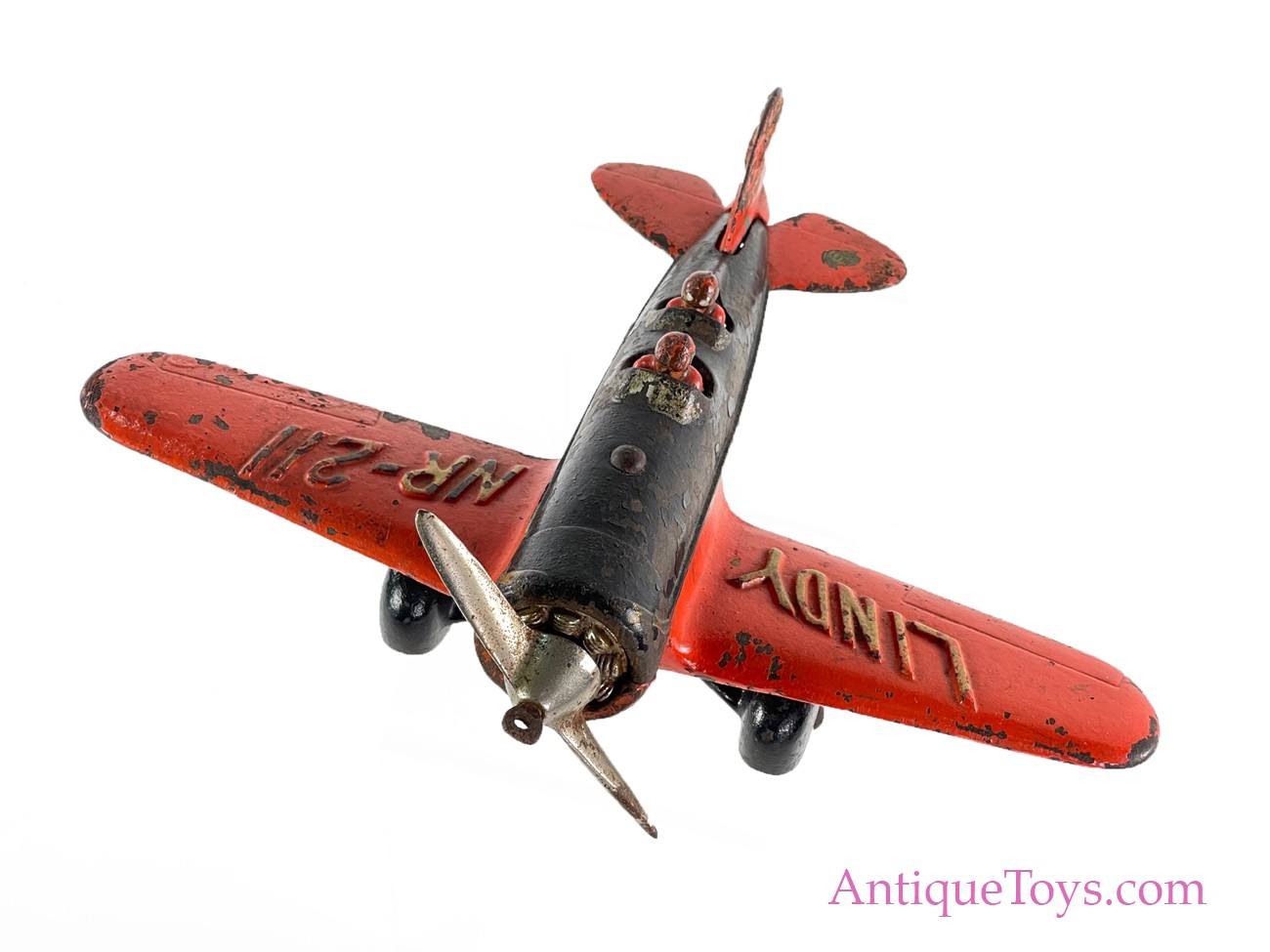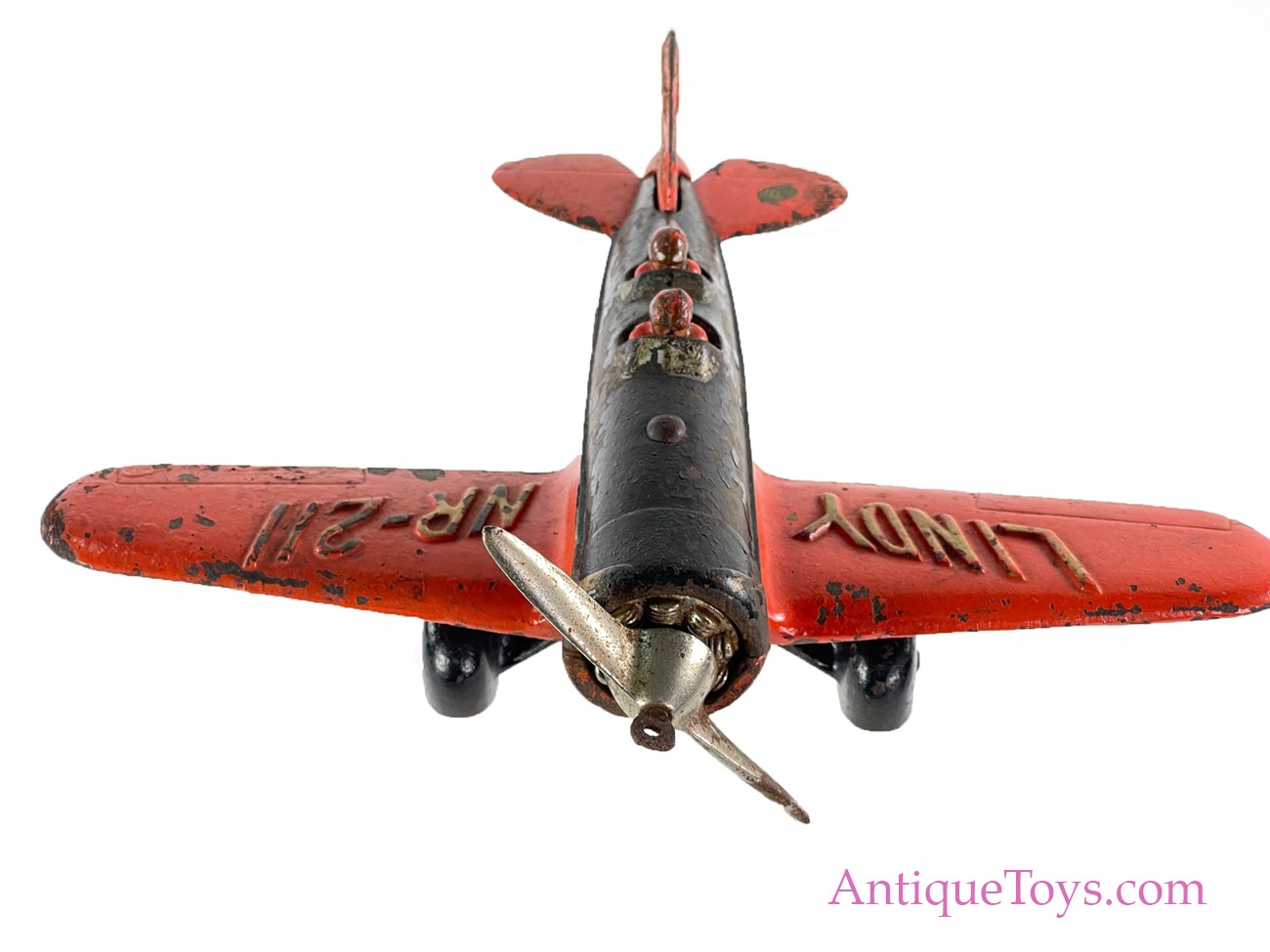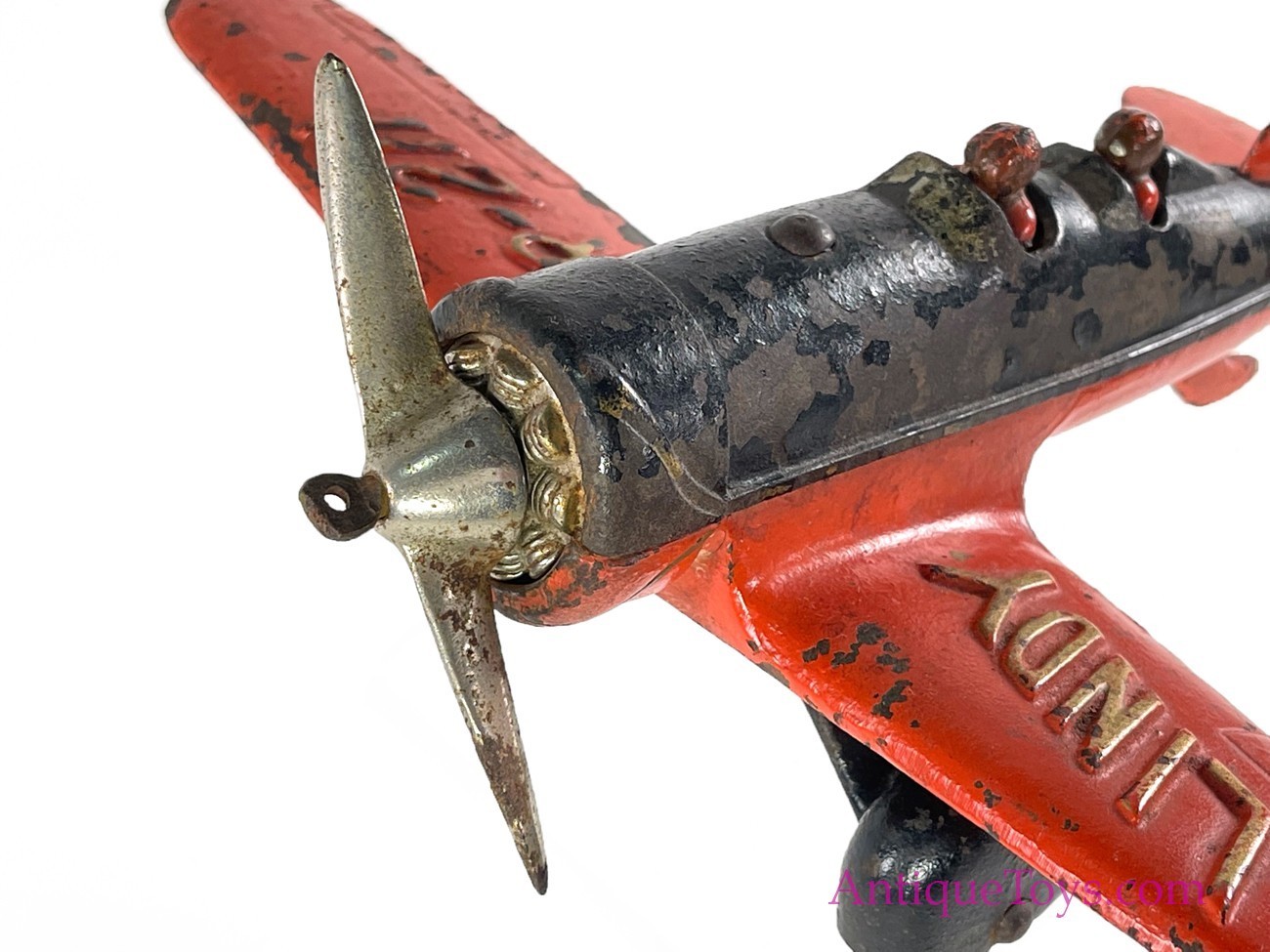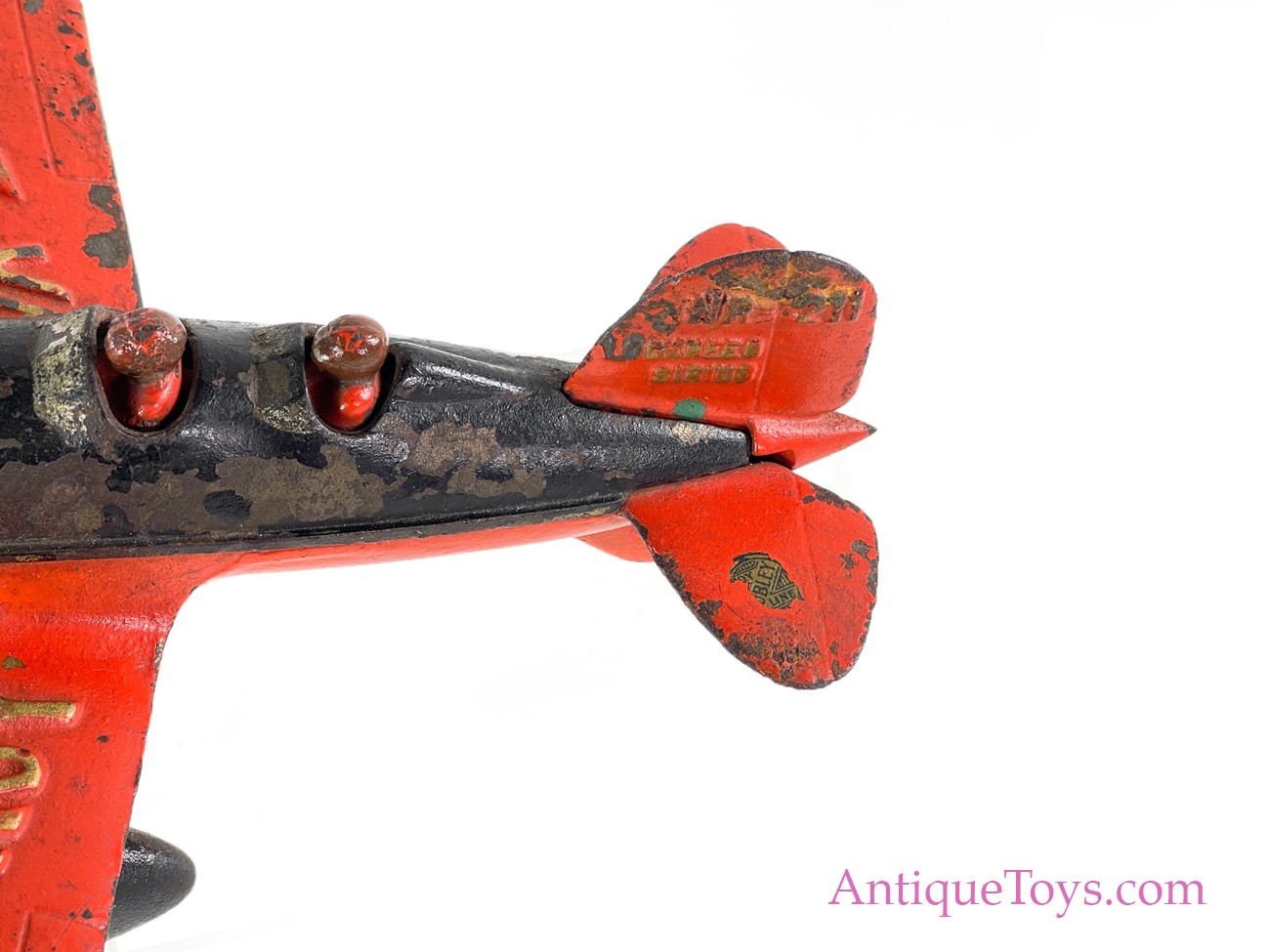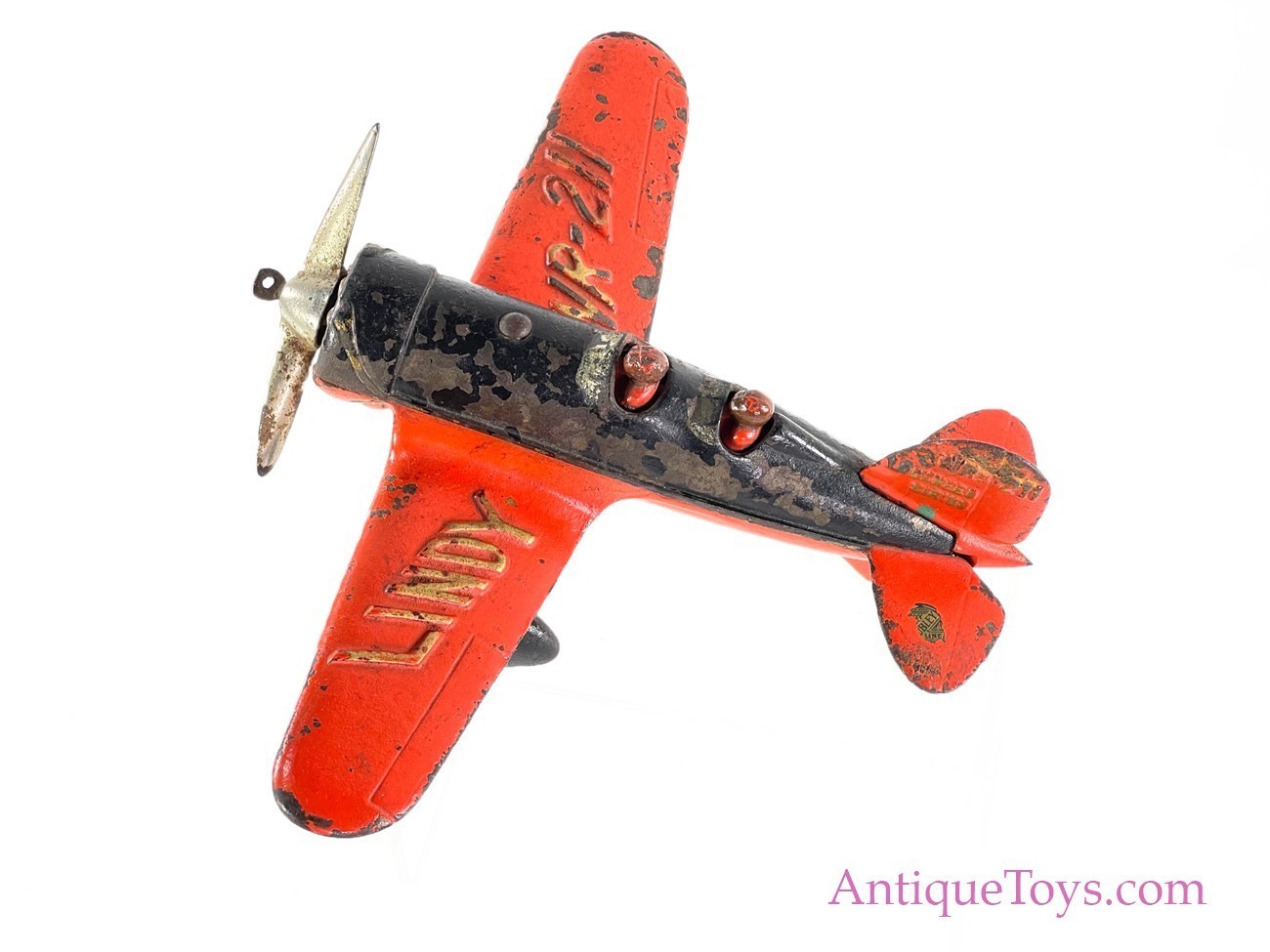Hubley Cast Iron “Lindy” Lockheed Sirius Airplane *SOLD*
Hubley Cast Iron “Lindy” Lockheed Sirius Airplane
Our cast iron Lindy plane, the Lockheed Sirius, was destined for a deep collection but took a left turn. Family obligations took precedent, so we feel lucky to offer it here to our readers. It is, arguably, the finest airplane toy in cast iron ever made in terms of elegance. The Sirius was aviator Charles Lindberg’s record-breaking plane ca 1930 and Hubley did an exquisite rendering.
We surmise that Lindy and Hubley had the airplane production halted due to the fate of the Lindberg baby. It is an extremely rare toy. His wife, pregnant wife, was the co-pilot when they made a travel record from New York to LA in this aircraft.
Condition on the toy is used with chipping to the black. The orange paint is much stronger with gold highlights. Part of the Hubley brand decal is still affixed to the left elevator.
Of note is that this is the first release with cast iron wings. Again, a great subset within the already rare lindy toy. Price hurt its production run, and it was released during the Great Depression.
The wheels and propeller are all original as is the entire toy. It was kid used and then well preserved to today, approximately 90 years later.
History on the Sirius and Lockheed and Lindy:
Lindbergh wanted his new plane to be able to make a nonstop flight across the United States, as well as scout new air routes to China. It was up to Lockheed to invent the technology to meet his needs. Lindbergh’s list of custom touches included a tandem cockpit with dual controls and sliding canopy to accommodate him and his co-pilot—his seven-month’s-pregnant wife, Anne Morrow Lindbergh. The fuselage needed to be big enough to allow for full use of parachutes in case they needed to make a mid-air exit. Room also had to be made for state-of-the-art navigation equipment and a small generator that could power the Lindbergh’s’ electrically warmed flight suits.
Lockheed chief engineer Gerard Vultee designed the Lockheed 8 Sirius based on Lindbergh’s specifications. Slightly smaller than the Spirit of St. Louis—just shy of 43 feet to the St. Louis’s 46—the Sirius was capable of traveling 185 miles per hour compared to the St. Louis’s top speed of 133 mph. It was delivered in April 1930, and within days Charles and Anne embarked from Los Angeles, arriving in New York City 14 hours, 45 minutes, and 32 seconds later—breaking the previous record by 3 hours.
A brief history of Hubley Manufacturing Company of Lancaster, Pennsylvania:
The Hubley Manufacturing Company was first incorporated in 1894 in Lancaster, Pennsylvania by John Hubley. Their slogan was “They’re Different”. They were occasionally known as Lancaster Brand Iron Toys which manufactured electric toy train equipment and parts. In 1909, they purchased the Safety Buggy Co. factory and moved to the site. The first Hubley toys appeared in 1909 and were made of cast-iron, with themes that ranged from horse-drawn vehicles, fire engine, circus trains, different breeds of dogs, tractors, steam shovels, horses, banks, and cap guns.
The Hubley Manufacturing Company produced a wide range of cast-iron toys, doorstops, and bookends. Toys, particularly motor vehicles and cap guns, were also produced in zinc alloy and plastic. The company is probably most well known for its detailed scale metal kits of Classic cars in about 1:20 scale. Starting in 1960, Hubley participated for a couple of years with Detroit automakers as a plastic promotional model maker. Many Hubley toys are now sought-after collectibles. Hubley’s main competition in the early years was Arcade as well as a bit from A.C. Williams.
By the 1930’s autos became the headliners. By quickly converting to cheaper smaller toys during the Depression, they avoided financial woes experienced by many other toy companies. Iron shortages in WWII and commitments to fill war contracts did stop the toy division in 1942, until after the war.
As of 2019, Wikipedia tells us that, “Perhaps Hubley’s diversification in the 1960s overtaxed its profits, weakening it financially by the 1970s. Hubley was purchased by toy maker Gabriel about 1969 who continued to make its regular kits and diecast kids toys through the 1970s. A series of colorful but rather unexciting generic make diecast toy trucks were available in a variety of forms (dump truck, tow truck, etc.) up until about 1980. Gradually, the Hubley name was downplayed in favor of Gabriel.
Around 1980, Hubley was acquired by CBS Toys which later sold many dies to Ertl and Scale Models, both of Dyersville, Iowa. For example, the Hubley Ford 4000 tractor was reproduced by Scale Models, up through the 1990s and perhaps later (Scale Models 2010). In the 1990s, some Hubley vehicles like the school bus, were also reissued with minor variations from the original casting.
Ertl has now stopped production of all of the original toy dies and molds purchased from Hubley. As a result, all remaining Hubley/Ertl metal kits are fairly rare. They can be purchased from auction web sites as well as from collectors and older hobby stores.”
Additional information
| Weight | 5 lbs |
|---|---|
| Dimensions | 18 × 14 × 10 in |
